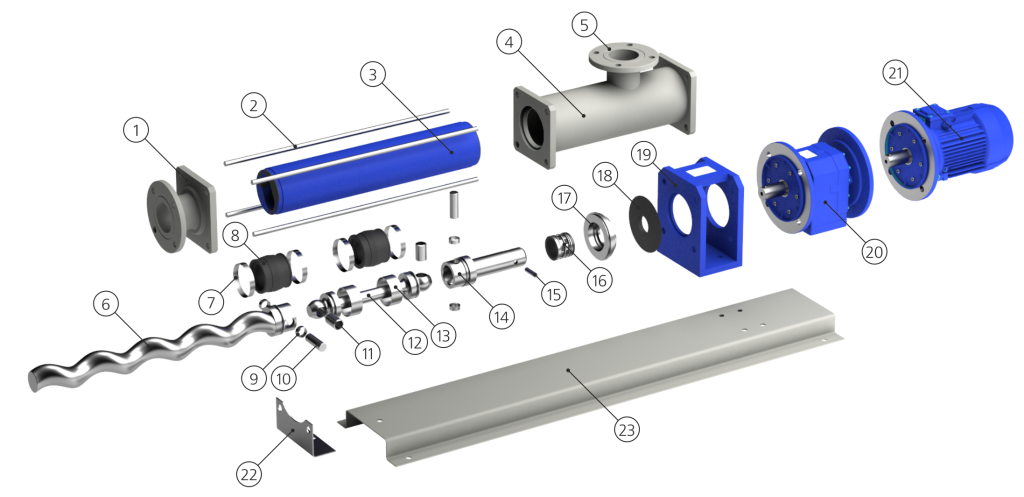Designing a progressive cavity pump involves understanding its fundamental components, operating principles, and the factors influencing its performance. This beginner’s guide will provide you with an overview of the design considerations and the important aspects of progressive cavity pumps.
1. What is a Progressive Cavity Pump?
- Definition: A progressive cavity pump is a type of positive displacement pump that consists of a helical rotor and stator. It is specifically designed to transport viscous, shear-sensitive fluids and slurries.

2. Key Components of Design
A. Rotor
- Description: A helical screw that rotates within the stator to create cavities that trap and move fluid.
- Material Selection: Typically made from stainless steel or other durable materials to withstand wear and corrosion.
B. Stator
- Description: The stationary helical element that surrounds the rotor, forming a seal and maintaining fluid flow.
- Material Selection: Often made from elastomers or synthetic materials that can handle the specific chemical properties of the fluid being pumped.
C. Drive Shaft
- Description: Connects the rotor to the motor, enabling rotation.
- Design Considerations: Ensure proper alignment and support to prevent vibrations and wear.
D. Seals and Gaskets
- Description: Prevent fluid leakage and maintain pressure within the pump.
- Material Selection: Choose materials compatible with the fluid to avoid degradation.

3. Operating Principle
- Fluid Movement: Fluid enters the pump through the inlet, and as the rotor turns, it creates a series of cavities that draw the fluid in and push it toward the discharge.
- Positive Displacement: The volume of fluid displaced is directly related to the rotor’s rotation, ensuring precise flow control.
4. Design Considerations
Designing a progressive cavity pump requires careful consideration of various factors:
A. Fluid Properties
- Viscosity: Higher viscosity fluids may require specific rotor and stator designs for effective pumping.
- Chemical Compatibility: Select materials that can handle the corrosive or abrasive nature of the fluid.
B. Flow Rate and Pressure Requirements
- Flow Rate: Determine the required flow rate based on application needs.
- Pressure: Calculate the necessary pressure to overcome system resistance.
C. Pump Size and Configuration
- Pump Sizing: Choose the appropriate size to accommodate the required flow rate and pressure.
- Configuration: Determine whether a single or multi-stage pump is needed for the application.
D. Installation and Maintenance Considerations
- Accessibility: Design for easy access to components for maintenance and repairs.
- Alignment: Ensure proper alignment to minimize wear and maximize efficiency.

5. Advantages of Progressive Cavity Pump Design
- Versatility: Suitable for a wide range of applications, from food processing to chemical handling.
- Low Pulsation: Provides a smooth flow, making it ideal for sensitive fluids.
- Self-Priming: Can handle fluids with air or gas without loss of prime.
6. Applications of Progressive Cavity Pumps
- Food and Beverage: Pumping thick liquids, slurries, and pastes.
- Wastewater Treatment: Handling sludge and other viscous materials.
- Chemical Processing: Transporting corrosive and hazardous chemicals.
- Oil and Gas: Moving crude oil and drilling fluids.
